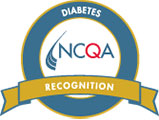To Buy Keflex Online Visit Our Pharmacy ↓
 Keflex: the Trusted Antibiotic for All Ages
Keflex: the Trusted Antibiotic for All Ages
Keflex, also known by its generic name cephalexin, is a commonly prescribed antibiotic that has a rich history and proven effectiveness in treating various bacterial infections. It was first approved by the U.S. Food and Drug Administration (FDA) in 1971 and has since become a trusted medication worldwide. Keflex belongs to the class of antibiotics known as cephalosporins, which are derived from a type of mold called Cephalosporium acremonium. This antibiotic works by interfering with the formation of bacterial cell walls, thereby inhibiting the growth and reproduction of bacteria. Keflex is effective against a wide range of bacterial infections, including respiratory tract infections, skin infections, urinary tract infections, and bone and joint infections. It is considered a first-line treatment option due to its effectiveness and minimal side effects. The long-standing history and proven effectiveness of Keflex have made it a trusted antibiotic for all ages.
Safe Usage for Children and Adults
Keflex, a trusted antibiotic for all ages, has a long history of safe usage for both children and adults. This widely prescribed medication is known for its effectiveness in treating various bacterial infections. When it comes to administering Keflex to children, healthcare professionals take into consideration the child's age, weight, and the severity of the infection. The dosage is adjusted accordingly to ensure optimal results and minimize potential side effects. For adults, Keflex is usually prescribed at a standard dosage, with adjustments made for those with compromised kidney function. The safety profile of Keflex, both in children and adults, makes it a reliable choice for healthcare providers. With its proven track record, Keflex continues to be an essential antibiotic option for diverse age groups.
Common Infections Treated with Keflex
Keflex, a widely trusted antibiotic, is effective in treating various types of infections caused by bacteria. It belongs to the class of drugs known as cephalosporins and has a long history of successful use in medical practice. Keflex is commonly prescribed to patients of all ages with infections such as respiratory tract infections, skin and soft tissue infections, urinary tract infections, and bone infections. It effectively targets bacteria by inhibiting their cell wall synthesis, thereby preventing their growth and reproduction. The broad spectrum of Keflex allows it to combat both gram-positive and gram-negative bacteria, making it a versatile option for treating a wide range of infections. With its proven track record and minimal side effects, Keflex continues to be a trusted antibiotic for patients of all ages.
Benefits and Minimal Side Effects
Keflex, a trusted antibiotic for all ages, offers numerous benefits and minimal side effects. One of the major advantages of Keflex is its effectiveness in treating various infections, making it a popular choice among healthcare providers. Moreover, Keflex is considered safe for both children and adults, allowing for its versatile usage. This antibiotic is frequently prescribed for common infections such as respiratory tract infections, skin infections, and urinary tract infections. Keflex not only effectively fights off bacteria but also minimizes the risk of adverse reactions. With the correct dosage and administration guidelines, Keflex ensures optimal results without causing significant side effects. Its track record of reliability and limited adverse effects make Keflex an ideal antibiotic option for individuals of all ages.
Dosage and Administration Guidelines
Keflex is an antibiotic medication that has been widely used for decades. It is available in various forms such as tablets, capsules, and oral suspension. The dosage of Keflex depends on several factors, including the severity of the infection, the age of the patient, and their kidney function. For adults and children over 15 years old, the usual dose of Keflex is 250-500mg taken every 6 hours. However, for more severe infections, the dosage may be increased to 1-4 grams daily, divided into 2-4 doses.In pediatric patients below 15 years old, the recommended dosage will vary based on age and weight, usually ranging from 25-50mg per kilogram of body weight, divided into 4 doses.It is important to take Keflex exactly as prescribed by the healthcare professional and complete the full course of treatment. The medication can be taken with or without food. If a dose is missed, it should be taken as soon as possible, but if it is close to the time for the next dose, it is best to skip the missed dose.These dosage and administration guidelines are essential to ensure the effective and safe use of Keflex for treating various bacterial infections.
Potential Alternatives and Precautions
Keflex, a widely trusted antibiotic, requires strict adherence to dosage and administration guidelines to ensure its effectiveness. The dosage of Keflex varies depending on the severity of the infection, age, and weight of the patient. For common infections, adults are generally prescribed a daily dose of 250-500mg, taken every six hours. Pediatric dosages are typically adjusted according to weight, with a lower daily dose of 25-50mg per kilogram. It is crucial to complete the full course of Keflex as prescribed, even if symptoms improve, to prevent antibiotic resistance. Keflex is usually taken orally with or without food, but it is important to follow the doctor's instructions regarding specific timing and precautions. It is also advised to avoid taking Keflex with certain medications or substances that may interfere with its absorption or effectiveness.
![]()








 We are now located at
We are now located at


